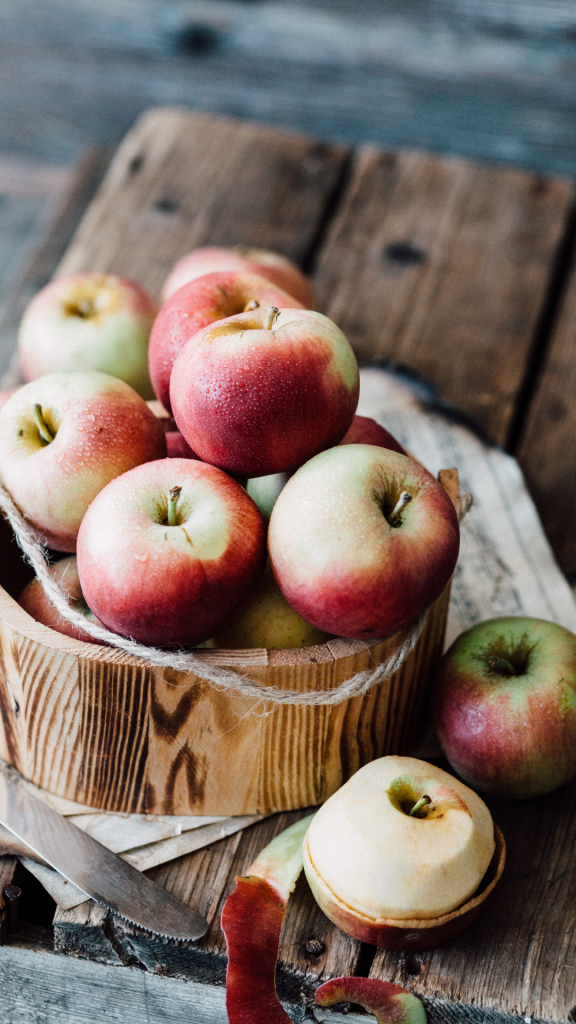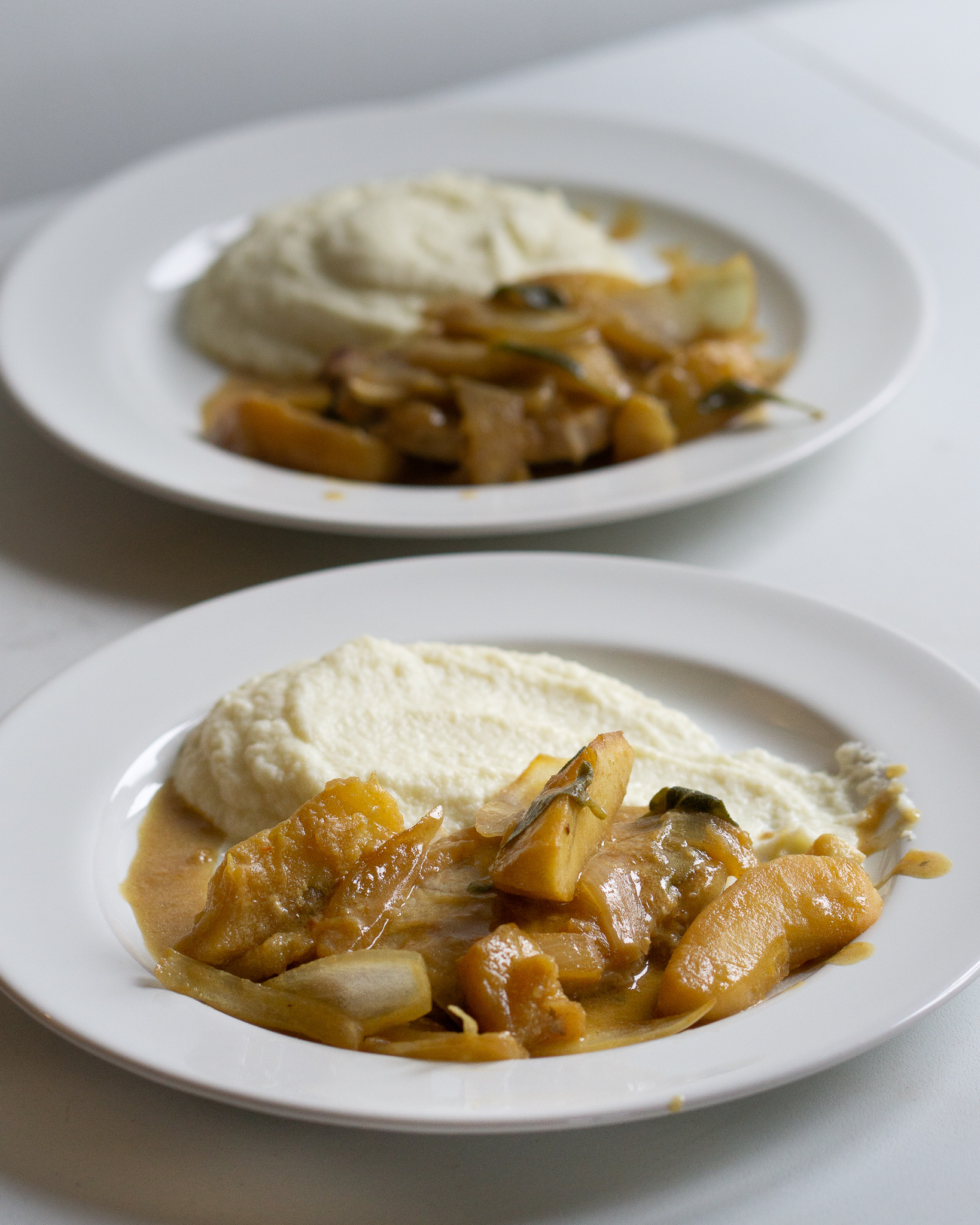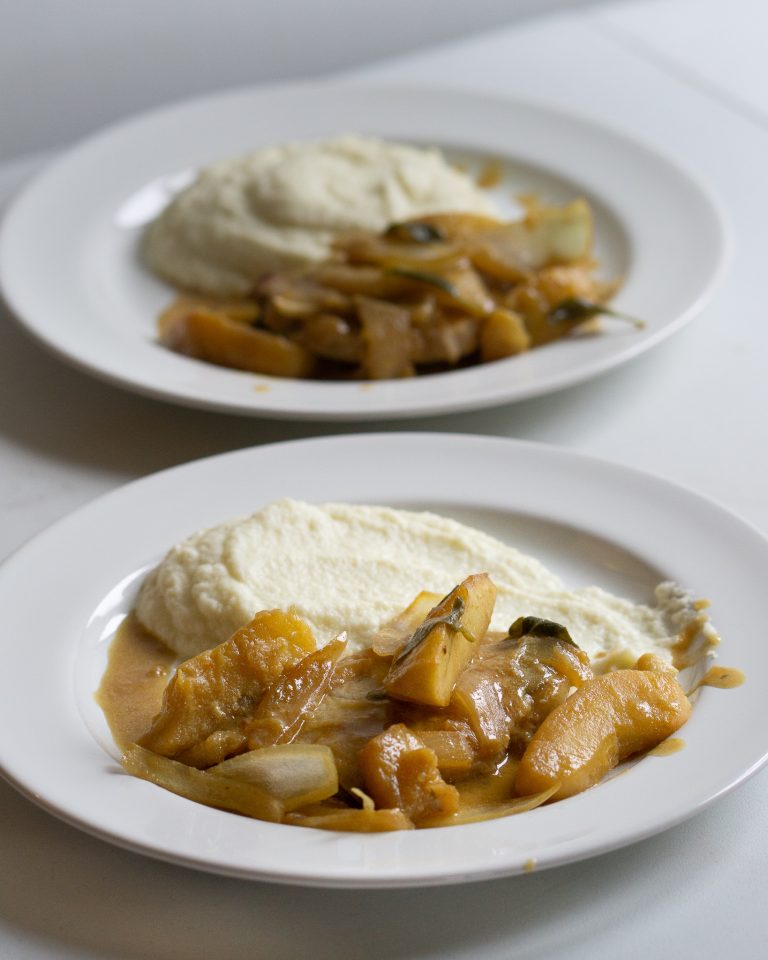Whether it’s a pork roast with applesauce, pork chops with sautéed apples, or a hearty pork and apple stew, the combination of pork and apples is a match as tried and tested as rhubarb and custard or apples and caramel. This simple but delicious creation is the distillation of all of those dishes in one everyday meal-ready recipe, easy and quick to make with abundantly flavourful results.
A rich history of apple and pork…
Apart from being a pairing that effortlessly works, the combination of pork and apples has a long and rich history in cooking. Wrapped up in culture, history and seasonality, the culinary world was never going to escape the combination of apples and pork due to their inherent connection to each other through harvest times, climate and cultural traditions.
- European Origins: Pork and apple dishes have a strong association with European cuisine. In medieval times, when pigs were commonly raised for meat in rural areas, apples were abundant in orchards and were widely used as a staple fruit. This led to the natural pairing of pork and apples in many traditional European dishes.
- Harvest Traditions: The combination of pork and apples is often associated with harvest traditions in Europe. In many regions, the fall season brings an abundance of both pork from pigs who’ve been fattened up over the winter and ripe apples from the orchards. This convergence of seasonal ingredients led to the development of various recipes combining the two.
- Culinary Influence: Over time, as trade and cultural exchange flourished, different culinary influences shaped the use of pork and apples in various cuisines. For example, German cuisine features dishes like Schweinebraten (roast pork) with apple sauce, while British cooking has a long history of serving pork with apple-based accompaniments, and even a whole roasted pig with an apple in its mouth for opulence sake.
- American Influence: Early European settlers in the United States brought with them their culinary traditions, including the pairing of pork and apples. This combination became ingrained in American cooking and has been passed down through generations.
Today, pork and apple dishes remain popular worldwide, featuring in various recipes, from roast pork with apple sauce to pork chops with apple chutney. So, there’s strong historical context to this age-old combination, and all the more reason to get it on your plate and enjoy it for yourself.
In the kitchen, the marriage of pork and apples is a timeless romance, where sizzling pork meets caramelized apples, creating a tantalizing love story on the taste buds.”
Unkown
Also Read: Spelt Cardamom Apple crumble muffins
Choosing the right apples:
When it comes to cooking pork, there are several apple varieties that work better than others, due to their milder and more complimentary flavour profile and also because they hold up during the cooking process. Some of the most popular choices are:
- Granny Smith: We all know these tart and crisp apples are commonly used in savory dishes. They hold their shape well when cooked and provide a nice contrast to the richness of pork.
- Honeycrisp: With their sweet-tart flavor and firm texture, Honeycrisp apples add a pleasant balance to savory pork dishes. They retain their shape when cooked and offer a refreshing juiciness.
- Fuji: Fuji apples are sweet, crisp, and slightly tangy. They work well in dishes where you want a touch of sweetness to complement the pork’s savory flavors.
- Braeburn: This apple variety has a balanced sweet-tart flavor and a firm texture that holds up well in cooking. Braeburn apples can add depth to pork dishes and provide a subtle sweetness.
- Jonathan: These apples have a tangy-sweet flavor that pairs nicely with pork. They are great for adding brightness and complexity to your dishes.
It’s worth experimenting with different apple varieties to find your preferred flavor profile. Ultimately, the best apple for cooking with pork depends on your personal taste preferences and the specific dish you are preparing.
Cooking the perfect piece of pork
Cooking the perfect piece of pork requires attention to detail and careful cooking techniques. Here are some tips to help you achieve deliciously cooked pork every time:
- Choose the right cut for the right recipe: Different cuts of pork have different qualities and require specific cooking methods. For tender and quick-cooking options, choose cuts like pork tenderloin, pork chops, or loin roast. For slower cooking methods, consider cuts like pork shoulder or pork belly.
- Season generously: Just like most meats, pork benefits from being well-seasoned before and after the cooking process. It’s always a good idea to season the pork with salt, pepper, and any other desired spices or herbs and leave it at room temperature for about 30 minutes (depending on the climate) to let the flavors penetrate the meat.
- Preheat and prepare the cooking method: Preheat your oven, grill, or pan to the appropriate temperature for the chosen cooking method. Ensure your cooking surface is well-oiled or properly preheated to prevent sticking and ensure even cooking.
4. Use a meat thermometer: To achieve the perfect level of doneness, use a meat thermometer to monitor the internal temperature of the pork. The safe minimum internal temperature for pork is 145°F (63°C) with a three-minute rest time. For well-done pork, the internal temperature can reach 160°F (71°C).
5. Avoid overcooking: Overcooked pork can become dry and tough. Keep a close eye on the cooking time and internal temperature to prevent overcooking. Remove the pork from the heat source when it reaches the desired temperature and let it rest for a few minutes before slicing.
6. Rest the pork: Allowing the pork to rest for 5-10 minutes after cooking helps the juices redistribute within the meat, resulting in a more tender and flavorful final product. Tent the pork loosely with foil to retain heat during the resting period.
7. Slice properly: When ready to serve, slice the pork against the grain for maximum tenderness. This means cutting across the muscle fibers instead of parallel to them. Slicing against the grain helps break down the fibers and results in more tender meat.
8. Consider marinades and brines: Marinating or brining the pork before cooking can add flavor, tenderize the meat, and enhance moisture retention. Choose marinades or brines that complement the flavor profile of the pork and follow the recommended marinating times.
9. Experiment with cooking methods: Pork can be cooked through various methods such as grilling, roasting, pan-searing, braising, or slow-cooking. Experiment with different techniques to discover your favorite way of cooking pork.
Remember that cooking times and temperatures may vary depending on the specific cut and thickness of the pork, so it’s essential to adapt accordingly. With practice and attention to detail, you can most certainly master the art of cooking the perfect piece of pork.
Tips for making cauliflower puree:
Once you start into the world of vegetable puree your life with probably never be the same, every vegetable lends its own unique flavour profile and all of them can be the perfect compliment to the right meat-based dish. Cauliflower puree is my go-to when I’m trying to cut the carbs however, it gives the creamy consistency of mashed potatoes and a mild enough flavour you can pretend that it’s the real potatoey deal. But it also works really well in dishes with heavier ingredients as a light base to carry sauces and not overpower the star of the plate.
- Don’t overcook the cauliflower: Be mindful not to overcook the cauliflower as it can become mushy and waterlogged, resulting in a watery puree. Cook it until it is just tender enough to be easily mashed with a fork.
- Drain the cauliflower well: After cooking the cauliflower, drain it thoroughly and let it steam away to remove any excess water. This step is crucial to achieving a creamy and velvety texture in the puree.
- Use a food processor or blender: For the smoothest consistency, you must must must, use a food processor or blender to puree the cauliflower. This will help create a creamy texture and eliminate any lumps, you really can’t do this with a hand masher, believe me I’ve tried!
- Add flavor with garlic: Sauté minced garlic in butter or oil before adding it to the cauliflower puree. This will infuse the puree with a delicious garlicky flavor. Adjust the amount of garlic based on your personal preference.
- Incorporate fats for richness: To enhance the flavor and richness of the puree, add butter and heavy cream (or a suitable substitute like milk or vegetable broth) while blending. The fats help create a smooth and luxurious texture.
- Season well: Be sure to season the cauliflower puree with salt and pepper to taste. Start with a small amount and gradually adjust according to your preference. Remember that the flavor of the puree should complement the main dish it accompanies.
- Optional toppings and mix-ins: Consider garnishing your cauliflower puree with grated Parmesan cheese, chopped fresh herbs, or a drizzle of olive oil. These toppings can add extra flavor and visual appeal to your dish.
I guarantee once you puree, you’ll be forever changed, so get those food processors ready!
A note on ingredients:
As always with simple dishes, the quality of the ingredients make all the difference.

Apples: As Above
Pork: As above
Stock: It’s always preferable to make your own, but there’s plenty of good quality stocks out there now that do just as well.
Wine: I usually use a Sauvignon blanc which is probably a bit on the sweet side for this dish, but any dry white wine will do.
Sage: Feel free to add a few more leaves if you want a stronger herbaceous flavour, but don’t go too hard or it will taste astringent. A couple of crispy fried sage leaves for serving can also enhance the overall experience of the dish.
Cauliflower puree: This recipe is actually one where it;s quite okay to use a cauliflower that’s a little bit under the weather. Since the best pureed are silky smooth and beyond recognition from the original vegetable they are made from, old or fresh any cauliflower will do.

Succulent Pork, with Sage, Apples & Cauliflower Purée
Equipment
- 1 saucepan
- 1 skillet
- 1 strainer
- 1 High speed blender or food processor
Ingredients
For the sauce
- 500 grams apples
- 1 cup chicken stock
- 1 cup white wine
- 1 large onion diced
- 1 tsp dijon mustard
- 6 leaves sage
For the cauliflower puree
- 1 head cauliflower (broken into florets)
- 1 litre chicken stock
- 1 tsp dijon mustard
- 1 tbsp butter
- 1 tsp salt
For the pork
- 4 pork chops
- 1 pinch salt
- 1 tsp pepper
- 1 tbsp olive oil
- 1 tsp butter
Instructions
- Preheat oven to 180 degree C.
- For the pork: Heat the skillet to high, add the butter and oil and quickly brown the pork on both sides. Then set pork aside and use the skillet to prepare the sauce. Reduce the heat to medium.
- For the apple sauce: Add the onions to the pork-infused pan, fry until brown. Deglaze with wine as soon as the onions are brown or if they start to stick to the pan.
- Add the apples, stock, mustard and sage and place pork back into the pan – put the skillet in the oven for 20 minutes. Check after 10 and if it starts to burn, cover with aluminium foil.
For the cauliflower puree
- Boil the stock and add the cauliflower. Make sure to cook the cauliflower till its falling apart, about 25 minutes.
- Drain the cauliflower and leave to let the extra water evaporate for about 5 min or until the steam stops. (But not so long it goes cold)
- Blend to a puree in a high-speed blender with butter, mustard and salt.
Notes
Did you make this recipe?
Lovely. Now let me know how you liked it. Tag me @thetastyspoonful on Instagram or send us a message on Facebook @ The Tasty Spoonful
While I have you here, may I suggest you try these next:
Until next time. Keep following, liking, sharing, commenting and cooking, and may your every spoonful be tastier than the last!




